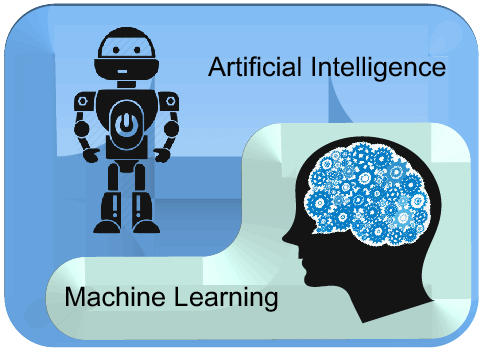Difference Between Artificial Intelligence and Machine Learning

Artificial intelligence and machine learning are two branches of computer science that are closely connected. These two technologies are among the most popular for developing intelligent systems.
Although these are two related technologies that are frequently used interchangeably, they are still distinct names in many situations.
Artificial Intelligence
There is a widespread misperception that artificial intelligence is a system, but it is not. The system incorporates AI. There are several definitions of AI, one of which is “it is the study of how to train computers so that computers can accomplish things that people can do better at the moment.” As a result, we wish to bring to a machine all of the skills that humans possess.
Artificial intelligence systems do not need to be pre-programmed; instead, they employ algorithms that function with their own intelligence. It makes use of machine learning technologies such as Reinforcement learning and deep learning neural networks. AI is employed in a variety of applications, including Siri, Google’s AlphaGo, and AI in chess playing.
AI is categorized into three kinds based on its capabilities:
Weak AI, General AI, and Strong AI
Many IT companies and their customers employ modern AI. Among the most frequent AI uses currently are:
Common Artificial Intelligence Apps
- Web search engines that are advanced (Google)
- Self – driving (Tesla)
- Personalized suggestions (Netflix, YouTube)
- Personal assistants (Amazon Alexa, Siri)
Machine Learning
Machine Learning is the learning that a machine can do without being explicitly programmed. It is an AI application that allows the system to automatically learn and develop based on experience. By merging the program’s input and output, we can construct a program. “Machine Learning is said to learn from experience E w.r.t a class of task T and a performance measure P if learners’ performance at the task in the class as measured by P improves with experiences,” according to one simple definition
Types of Machine Learning
There are three forms of machine learning: supervised, unsupervised, and reinforcement learning. Based on what they want to predict, a data scientist or other ML practitioner will employ a certain version. Here is an explanation of each form of ML:
Supervised ML: In this type of ML, data scientists will feed labelled training data to an ML model. They will also specify the variables they want the program to look at in order to find correlations. The input and output of information are specified in supervised learning.
Unsupervised ML: In unsupervised ML, algorithms train on unlabeled data, and the ML scans it for relevant connections. Predetermined unlabeled data and ML outputs
Reinforcement learning entails data scientists training ML to fulfil tasks.
Common Machine Learning Applications
ML is crucial to the operations of major organisations, including as Netflix, Amazon, Facebook, Google, and Uber. ML may be used in a variety of ways, including:
- Email Filtering
- Recognition of speech
- Vision in computers (CV)
- Detection of spam/fraud
- Maintenance that is predicted
- Detection of malware threats
- Automation of business processes (BPA)
AI and MI are extremely complex issues that some people struggle to grasp. Despite their enigmatic natures, AI and ML have swiftly become indispensable tools for organizations and consumers, and the most recent advances in AI and ML may change the way we live.
PTA Taxes Portal
Find PTA Taxes on All Phones on a Single Page using the PhoneWorld PTA Taxes Portal
Explore NowFollow us on Google News!





